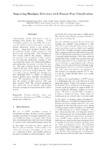Mostrar o rexistro simple do ítem
Improving handgun detectors with human pose classification
| dc.contributor.author | Ruiz-Santaquiteria Alegre, Jesus | |
| dc.contributor.author | Deniz, Óscar | |
| dc.contributor.author | Vallez, Noelia | |
| dc.contributor.author | Velasco Mata, Alberto | |
| dc.contributor.author | Bueno, Gloria | |
| dc.date.accessioned | 2022-09-05T12:08:37Z | |
| dc.date.available | 2022-09-05T12:08:37Z | |
| dc.date.issued | 2022 | |
| dc.identifier.citation | Ruiz-Santaquiteria, J., Deniz, O., Vallez, N., Velasco-Mata, A., Bueno, G. (2022) Improving handgun detectors with human pose classification. XLIII Jornadas de Automática: libro de actas, pp.1040-1047 https://doi.org/10.17979/spudc.9788497498418.1040 | es_ES |
| dc.identifier.isbn | 978-84-9749-841-8 | |
| dc.identifier.uri | http://hdl.handle.net/2183/31432 | |
| dc.description.abstract | [Abstract] Unfortunately, attacks with firearms such as handguns have become too common. CCTV surveillance systems can potentially help to prevent this kind of incidents, but require continuous human supervision, which is not feasible in practice. Image-based handgun detectors allow the automatic location of these weapons to send alerts to the security staff. Deep learning has been recently used for this purpose. However, the precision and sensitivity of these systems are not generally satisfactory, causing in most cases both false alarms and undetected handguns, particularly when the firearm is far from the camera. This paper proposes the use of information related to the pose of the subject to improve the performance of current handgun detectors. More concretely, a human full-body pose classifier has been developed which is capable of separating between shooting poses and other non-dangerous poses. The classified pose is then used to reduce both the number of false positives (FP) and false negatives (FN). The proposed method has been tested with several datasets and handgun detectors, showing an improvement under various metrics. | es_ES |
| dc.description.sponsorship | This work was partially funded by projects PDC2021-121197-C22 (funded by MCIN/AEI/ 10.13039/501100011033 and by the European Union NextGenerationEU/PRTR) and SBPLY/21/180501/000025 (funded by the Autonomous Government of Castilla-La Mancha and the European Regional Development Fund -ERDF-). The first author is supported by Postgraduate Grant PRE2018-083772 from the Spanish Ministry of Science, Innovation, and Universities. | es_ES |
| dc.description.sponsorship | Junta de Comunidades de Castilla-La Mancha; SBPLY/21/180501/000025 | es_ES |
| dc.language.iso | eng | es_ES |
| dc.publisher | Universidade da Coruña. Servizo de Publicacións | es_ES |
| dc.relation.uri | https://doi.org/10.17979/spudc.9788497498418.1040 | es_ES |
| dc.rights | Atribución-NoComercial-CompartirIgual 4.0 Internacional (CC BY-NC-SA 4.0) https://creativecommons.org/licenses/by-nc-sa/4.0/deed.es | es_ES |
| dc.rights.uri | http://creativecommons.org/licenses/by-nc-sa/3.0/es/ | * |
| dc.subject | Handgun detection | es_ES |
| dc.subject | Human pose classification | es_ES |
| dc.subject | Deep learning | es_ES |
| dc.subject | CCTV surveillance | es_ES |
| dc.subject | Human pose estimation | es_ES |
| dc.title | Improving handgun detectors with human pose classification | es_ES |
| dc.type | info:eu-repo/semantics/conferenceObject | es_ES |
| dc.rights.access | info:eu-repo/semantics/openAccess | es_ES |
| UDC.startPage | 1040 | es_ES |
| UDC.endPage | 1047 | es_ES |
| dc.identifier.doi | https://doi.org/10.17979/spudc.9788497498418.1040 | |
| UDC.conferenceTitle | XLIII Jornadas de Automática | es_ES |






